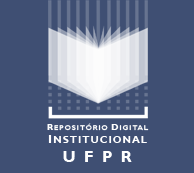IMBRICATION TECHNIQUE OF THE LEFT FREE WALL VENTRICULAR ON DOGS (Canis familiaris Lin.)
DOI:
https://doi.org/10.5380/rsa.v1i1.994Abstract
The partial ventriculectomy, based on Laplaces law, which reduces the left ventricular distance, has been used in human beings for the treatment of dilated Cardiomyopathy (BATISTA, 1996). As an alternative to reduce the left ventricular diameter and treat dogs with such disease, it was proposed an experimental technique - The Left Ventricular Imbrication, in Curitiba, Paraná, Brasil. Like the former technique the purpose of the latter is to improve ventricular function. In order to develop the experimental technique eight normal, adult mongrel dogs were used. The animals received acepromazin and atropine sulphate as pre-anesthetic and anesthesia was induced with sodium thiopental and maintained with ether. After a "T shaped" pericardiothomy, the free wall of the left ventricle was imbricated by avoiding coronary vessels and fastened by three interrupted transfixed sutures in a mattress pattern with a 3-0 polypropylene straight cutting needle assembled suture. The technique is cheap and extracorporeal circulation is not necessary. Echcardiographic controls were done 24 hours before 48 hours after the surgery. The electrocardiogram was registered before as well as 1, 2, 7, 15, 21, 30, and 60 days after the surgery. The echocardiography measures indicate a mean reduction of 23.5% (35.2625 ± 5.1978 x 26.9000 ± 4.0567; p<0.01) in the left ventricle distance. The ECG detected ventricular premature complexes 24 hours after the surgery and spontaneous regression occurred during the first week. None dog has perished. The authors, considering the promising results obtained with innovative technique, suggest to study the Left Ventricular Imbrication Technique in dogs with dilated cardiomyopathy.
Downloads
How to Cite
Issue
Section
License
Direitos Autorais para artigos publicados nesta revista são do autor, com direitos de primeira publicação para a revista. Em virtude da aparecerem nesta revista de acesso público, os artigos são de uso gratuito, com atribuições próprias, em aplicações educacionais e não-comerciais.


